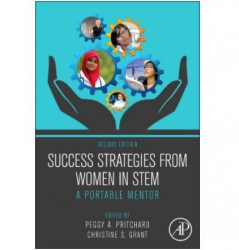Have you ever wished that there was an instruction manual for life? A second edition of “Success Strategies from Women in STEM” aims to be that book for women in research – a ‘portable mentor’ to help individual researchers find their way. It’s part of a much larger attempt to tackle the huge problem of gender equity in the STEM fields – science, technology, engineering and mathematics.

Success Strategies From Women in STEM, 2nd Edition from Elsevier.[/caption]Speaking from a decade of research experience in science, this is an important book. The numbers of female STEM researchers drop off drastically after the postdoctoral years, and while governments and funding agencies all over the world are working hard to fight this – take, for example, the Athena SWAN charter in the UK – there’s definitely also a place for individual researchers to learn skills to combat gender bias, and further their own careers in the process.
“Success Strategies from Women in STEM” does a good job of covering the many facets of a successful career in STEM, with chapters on leadership, time management, work-life balance, and even strategically using social media to your benefit in your career. These chapters draw from the wisdom of 16 women leaders in their fields, with anecdotes and advice from many more – over 350 women were interviewed for the first edition of the book. There’s plenty of further reading at the end of each chapter, for anyone interested in a specific topic.
For the most part, both men and women would benefit from reading Success Strategies from Women in STEM – because naturally, a successful career in research is largely the same for both sexes, with common risks and pitfalls. (Everyone can benefit from better networking skills, for instance, regardless of gender). But specific attention is also paid in the book to areas where women tend to be outnumbered by men: leadership positions, for instance. The book strikes a good balance between this more specific advice, and general ‘primer’-type information.
I had few issues with this book. It’s a well-polished and edited book, though some chapters were more labor-some reading than others. I would mainly note that this book is particularly targeted to those women seeking careers in academia – much of the career progression advice uses examples from that sphere, for instance, and alternative careers in science aren’t well explored. This isn’t an indictment per se – the book never claimed to be all things to all women – but it’s probably handy for readers to know the focus going in.
Overall, I found this to be a great read. Women at all stages of their career will find something useful for their career, though naturally early-career researchers will have the most to gain here. This is an encouraging and inspirational book.
The book is published by Elsevier and is available through their website.

